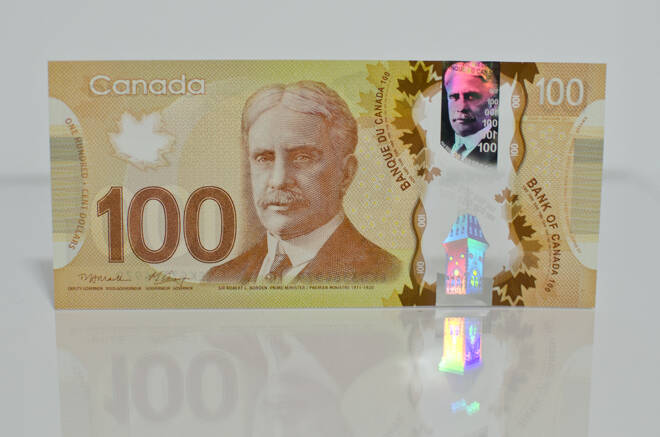Advertisement
Advertisement
USD/CAD Remains Confined to Its Range As Russia-Ukraine Tension Accelerate
By:
USD/CAD remained little changed as US benchmark yields fell following increased geopolitical tensions.
The dollar remains little changed against the Loonie ahead of rising uncertainty in Eastern Europe. US benchmark yields dipped as investors monitored the Russia–Ukraine crisis. The US ten-year yield hovers near 2.0% as the Fed Minutes did not reveal a more hawkish policy. Gold prices rose to $1885-$1890, their highest level since last June, as investors rushed to gold as a safe-haven asset. The dollar remained little changed following the Russia-Ukraine discussion and the Fed’s rate outlook. Following the FOMC minutes, markets priced in a 50-50 chance of a 1.75 percentage-point rate hike.
Technical Analysis
The USD/CAD stayed in its range against the Loonie. Resistance is seen near a downward-sloping trend line near 1.28. The exchange rate broke below the former support level seen near the 50-day moving average near 1.27. Support is seen near an upward-sloping trend line from the February lows of 1.265. Short-term momentum turned positive as the fast stochastic generates a crossover buy signal. Medium-term momentum is positive as the MACD (moving average convergence divergence) index generates a crossover buy signal, but momentum decelerates. This scenario occurs as the MACD line (the 12-day moving average minus the 26-day moving average) converges to the MACD signal line (the 9-day moving average of the MACD line). The MACD histogram is printing in positive territory with a downward sloping trajectory.
January US Housing Starts Dipped While Permits Surged
January US housing starts dropped by 4.1% to a seasonally adjusted rate of 1.638 million units. Economists expected starts to fall to a rate of 1.700 million units. Freezing temperatures across many parts of the country led to the decline. Rising mortgage rates also contributed to decreased housing demand among consumers. However, homebuilding permits surged by 0.7% to a rate of 1.899 million units, the highest since 2006.
About the Author
David Beckerauthor
David Becker focuses his attention on various consulting and portfolio management activities at Fortuity LLC, where he currently provides oversight for a multimillion-dollar portfolio consisting of commodities, debt, equities, real estate, and more.
Advertisement
